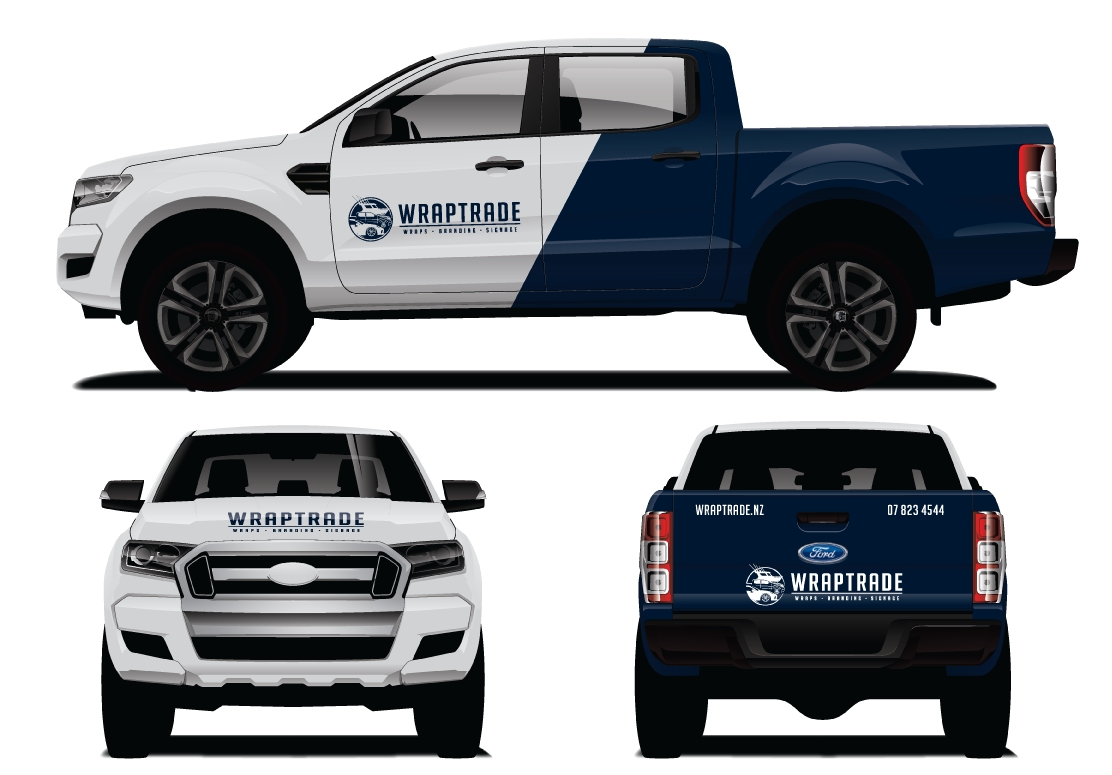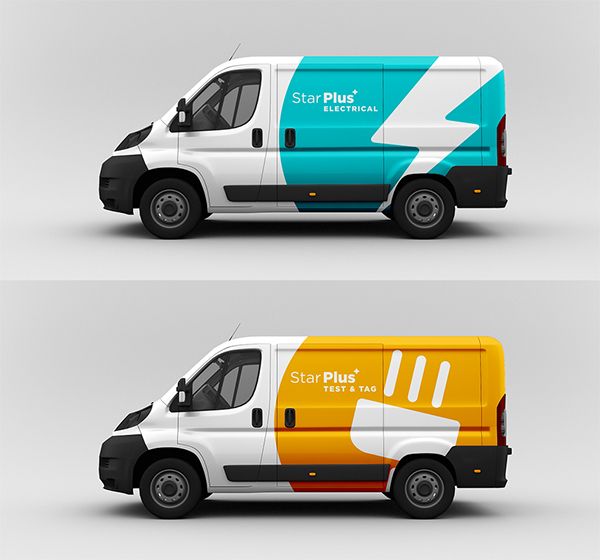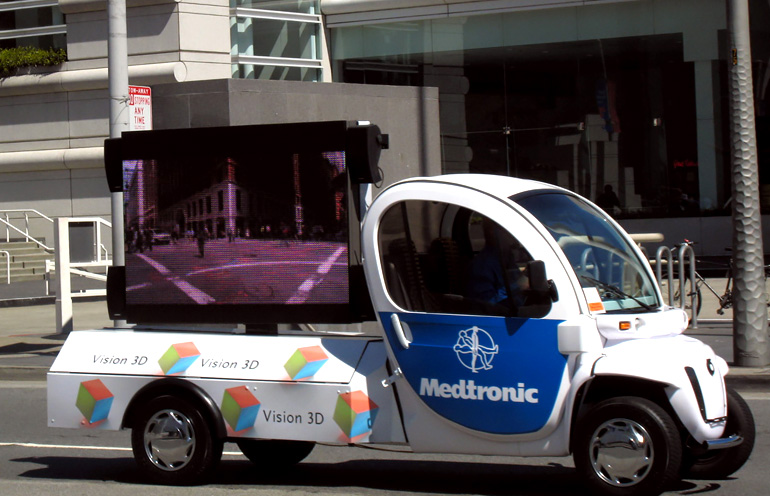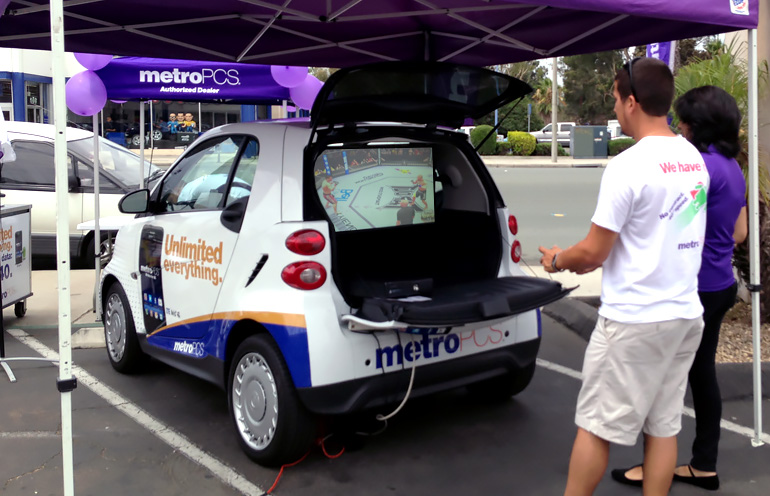Vehicle Media Advertising
In today’s fast-paced world, vehicle media advertising has become an integral part of any marketing campaign.
With millions of vehicles on the roads every day, it’s no wonder why many companies invest heavily in this type of promotion.
In this blog, we’ll explore the ins and outs of vehicle media advertising in En language, including its benefits and pitfalls. Whether
you’re a business owner looking to increase brand awareness or a curious consumer interested in learning more about this form of advertising, our insights will provide valuable information on how to navigate this competitive landscape.
So buckle up, grab some coffee and let’s dive into the world of vehicle media advertising.

1. Introduction to Advertising Vehicles
When it comes to marketing your business, selecting the right advertising vehicle is key. In order to effectively reach your target audience, you need to identify the appropriate media channels that will communicate your message and resonate with your desired customers.
As discussed in previous blog sections, media planning involves careful consideration of different media classes and identifying specific media vehicles to effectively deliver your advertising messages.
As you begin your foray into advertising, it’s important to understand the definition of a media vehicle. A media vehicle is a specific method of media used by companies to deliver their advertising messages to targeted customers.
In other words, it’s a specific television program, digital media, newspaper, magazine, radio station, outdoor advertising location, or any other channel that can be utilized to get your brand in front of potential consumers.
There are a variety of types of media vehicles to consider when selecting your advertising approach. Traditional media vehicles, such as television and radio, have been around for decades and continue to be popular options.
However, with the rise of digital advertising, there are now a wealth of digital media vehicles to consider as well. From social media to email marketing to online video advertising, there are a multitude of options that can help you reach your target audience in a meaningful way.
If you’re considering advertising on commercial vehicles, it’s important to understand the power of these specific media vehicles as well. Vehicle advertising can be an effective way to get your message in front of potential customers while they are out and about in their daily lives.
Furthermore, the use of targeted marketing vehicles can help you better understand your audience and tailor your advertising messages to their specific needs and preferences.
As you develop your media strategy, it’s important to carefully consider the different media vehicles available and how they align with your overall marketing goals. By identifying the most effective media channels for your brand, you can create targeted advertising campaigns that can help you reach your desired audience and achieve your business objectives.

2. Media Planning and Media Classes
Now that you understand the basics of advertising vehicles, it’s time to dive into media planning and media classes. As a media planner, your main objective is to create a comprehensive media plan that will effectively reach your target audience.
To start, you’ll need to select the appropriate media classes to use in your strategy. These classes can include print, broadcast, digital, out-of-home, and direct mail, just to name a few. As you select your media classes, keep in mind the goals of your organization and the preferences of your target audience.
Once you’ve selected your media classes, it’s time to define your media plan. This plan should outline how, when, and where your audience will receive your message.
Consider the reach and frequency of your ads, as well as the source effect that your media vehicles may have on your audience.
Keep in mind that developing a media strategy is not a one-time event. Continuous approaches to advertising expenses are necessary in order to stay relevant and effective. As the media landscape evolves, you’ll need to keep pace with new platforms and technologies that may be beneficial to your strategy.
Overall, effective media planning requires a deep understanding of your audience and a strategic approach to selecting and utilizing media classes. With these tools and the power of specific media vehicles, you can develop a media strategy that will not only reach your target audience, but also resonate with them.
3. Definition of Media Vehicle
Now that you understand the importance of advertising vehicles and media planning, it’s time to delve deeper into the concept of media vehicles.
A media vehicle is a specific method or property that accepts advertising messages. These can include television programs, digital media, newspapers, magazines, radio stations, outdoor advertising locations, and more.
Understanding the definition of media vehicles is crucial for developing a successful advertising strategy. When choosing a media vehicle, you must consider your budget, target audience, and marketing objectives.
For example, if you’re targeting a younger audience, you may want to focus on social media and digital advertising vehicles. If you’re trying to reach a broader audience, traditional media vehicles like newspapers and television may be more effective.
Remember, the goal of media vehicles is to motivate viewers or listeners to take action. Whether you want them to make a purchase, visit your website, or simply remember your brand, your choice of media vehicle can make all the difference.
Developing a media strategy that incorporates the right mix of media vehicles is essential for achieving your marketing goals.
Now that you have a better understanding of media vehicles, it’s time to start incorporating them into your advertising strategy. From digital advertising to commercial vehicles, there are countless options to choose from.
By defining your target audience, goals, and budget, you can select the media vehicles that will help you achieve the greatest success.

4. Types of Media Vehicles
Now that you have an understanding of advertising and media planning, let’s dive into the different types of media vehicles. As mentioned before, media vehicles are the methods used by companies to deliver advertising messages to their target audience. There are various types of media vehicles that advertisers can choose from:
- Broadcast media: This includes television and radio, which offer a wide reach and are great for building brand awareness.
- Print media: This includes newspapers and magazines, which can be more targeted and offer longer-lasting impressions.
- Outdoor media: This includes billboards, buses, benches, and taxis, which are great for reminding customers of a message they have already seen elsewhere.
- Digital media: This includes websites, social media, email, and search engine advertising, which allow for precise targeting and measurable results.
Each type of media vehicle has its own unique advantages and disadvantages. It’s important to consider your target audience, message, and budget when deciding which media vehicle(s) to use. Keep in mind that a combination of different types of media vehicles is often the most effective approach.
By understanding the strengths and weaknesses of each type of media vehicle, you can create a more effective media strategy that reaches your intended audience and meets your marketing goals.
5. Digital Advertising Vehicles
Now that you understand the different types of advertising vehicles and media planning, let’s dive deeper into digital advertising vehicles. Digital advertising has become one of the most effective ways to reach your target audience, and it is crucial to include it in your media strategy.
There are numerous digital advertising vehicles, such as social media ads, display ads, email marketing, and search engine marketing.
Social media ads are an excellent way to reach your target audience and engage with them. You can target specific demographics, interests, and behaviors to ensure your ads reach the right people.
Display ads are another effective digital advertising vehicle, typically found on websites and apps through banner ads or pop-ups. These ads can be targeted by location, demographics, interests, and behaviors, making them a great tool for reaching your ideal audience.
Email marketing is an excellent way to stay top of mind with your customers and prospects. Through email marketing, you can send personalized messages, special offers, and promotions. Additionally, email marketing allows you to track open rates and click-through rates, providing valuable insight into your campaign’s effectiveness.
Search engine marketing involves promoting your website through search engines such as Google to increase visibility and drive traffic to your site. You can use pay-per-click advertising, organic search engine optimization, or a combination of both to increase your website’s visibility in search engines.
Incorporating digital advertising vehicles into your media strategy can substantially increase your reach and engagement with your audience. As always, it is important to identify your target audience and track the effectiveness of your campaigns to ensure you are reaching your goals.
6. Introducing Vehicle Ads
Now that we’ve covered the definition and types of media vehicles, it’s time to dive into the latest addition to the digital advertising vehicle scene- vehicle ads.
As mentioned earlier, this new ad format is a performance-focused, lower funnel ad format which allows auto advertisers to promote their entire inventory of vehicles to interested buyers. With the help of an AI-provider like TRFFK, these ads combine the best of Google’s inventory-based performance campaign technology.
But what sets vehicle ads apart? Firstly, their ability to make connecting with car shoppers online and offline easier. Advertisers can choose to target online conversions through online ads, or offline conversions by providing options to either purchase or get the vehicle delivered.
Secondly, the ad format shows images that highlight the vehicle’s image, location, make/model, price, dealership name, and mileage- which gives potential buyers a comprehensive understanding of the vehicle. Additionally, vehicle ads take a feed from car dealers, allowing Google to match shoppers with the most relevant cars available.
Now, the power of specific media vehicles comes into play. By using vehicle ads, advertisers can target a specific audience- in this case, buyers interested in purchasing a car. Developing a media strategy that includes vehicle ads can help you reach a larger pool of potential car buyers without wasting valuable resources on non-relevant audiences.
Lastly, while we’ve talked about digital advertising vehicles, it’s important to mention that you shouldn’t overlook advertising on commercial vehicles. Depending on your industry, advertising on commercial vehicles can be an excellent and cost-effective way to reach a target audience.
In conclusion, introducing vehicle ads as a part of your media strategy can be a smart move. They allow you to reach interested car buyers through a performance-focused, lower funnel ad format while providing extensive information about the vehicles available. Don’t forget to consider commercial vehicle advertising to maximize your reach within your target audience.

7. The Power of Specific Media Vehicles
When it comes to advertising, choosing the right media vehicle can make all the difference. In previous sections, we discussed media planning and defined the concept of media vehicles. We also explored different types of media vehicles, including digital advertising vehicles and vehicle ads. Now let’s delve into the power of specific media vehicles.
Each media vehicle has its own unique strengths, and it’s important to understand those differences in order to effectively target your audience. For example, if you have a simple message to convey, print media such as newspapers or magazines may be the way to go. However, if your message is more complex, television or online video ads may be more impactful.
It’s not just about the format, though. Different media vehicles have different audiences. For example, if you’re targeting Generation-Y, social media may be more effective than traditional forms of advertising. On the other hand, if you’re targeting an older audience, radio or newspapers may be a better choice.
When developing your media strategy, it’s crucial to consider your target audience and their media consumption habits. Look for media vehicles that align with their interests and behaviors. For example, if your audience is interested in outdoor activities, advertising on the side of a commercial vehicle may be a smart choice.
By selecting the right media vehicles and tailoring your message to fit their strengths, you can maximize the impact of your advertising campaign. Whether it’s through print media, digital advertising, or vehicle ads, each media vehicle has the potential to be a powerful tool in reaching your target audience.
8. Developing a Media Strategy
When it comes to developing a media strategy for your automotive marketing campaigns, it’s important to track and understand the customer journey. This should serve as the foundation of your strategy. Once you have a solid understanding of your audience, you can move on to creating an effective media objective. This involves deciding on the best media vehicle to deliver your marketing message.
There are a variety of media vehicles to choose from, including traditional outlets like billboards and transit ads, as well as digital options like social media and mobile advertising. It’s important to consider the specific characteristics and preferences of your target audience when selecting your media vehicle.
Additionally, continuous monitoring, tracking, and analysis of your campaign’s performance is crucial for making adjustments and optimizing your strategy for success. Don’t forget to incorporate the power of specific media vehicles, such as advertising on commercial vehicles, to make a lasting impression on your target audience.
Developing a successful media strategy for your automotive marketing campaigns may require effort, but with careful planning and execution, you can effectively reach and engage your target audience.
By incorporating the guidelines outlined in media planning and classifying different media vehicles, you can reach your advertising objectives and promote your product effectively.
9. Advertising on Commercial Vehicles
In the world of advertising, commercial vehicles are a valuable tool to utilize for marketing purposes. When in motion, commercial vehicles receive a great deal of attention and are highly visible, making them an excellent medium for reaching potential customers.
To create an effective advertisement on a commercial vehicle, it’s essential to consider the message you want to convey and how you want to convey it. Ensure that your message is clear, concise, and compelling enough to catch people’s attention as they pass by. Customization allows for adding graphics and messaging which are easily renewable.
When developing a media strategy, it’s important to consider the specific type of commercial vehicle and how it relates to your target audience.
For example, a vehicle advertising a luxury car is more likely to appeal to an affluent audience, while a truck advertising work equipment might appeal to a blue-collar audience. The more specific you can be in identifying your target audience in relation to the commercial vehicle, the more effective your advertising will be.
When advertising on commercial vehicles, it’s essential to remember to be creative and engaging in your message. Think outside the box and come up with a unique and memorable campaign that will catch people’s attention and help your brand stand out in a sea of advertising.
Overall, commercial vehicles offer an excellent opportunity to expand your reach and target the audience through outdoor advertising. With a well-planned marketing strategy and an eye-catching message, you can transform your commercial vehicle into a moving billboard that attracts attention and generates leads with a significant return on investment.

10. Marketing Vehicles and Target Audience
Now that you have a better understanding of media vehicles and their different types, it’s time to focus on your target audience. Knowing your audience is essential in developing an effective marketing strategy. You need to understand their lifestyles, preferences, and habits to determine which media vehicle will resonate with them.
To target your audience effectively, you need to segment them into different groups. For example, those seeking a luxury car might be more interested in the cosmetic features of the vehicle, while those looking for a family car might be more interested in safety and comfort. By segmenting your audience, you can deliver more personalized messages and improve your chances of grabbing their attention.
Once you’ve identified your target audience and segmented them, it’s best to pay for advertising space in locations where you’re sure they’ll see it.
This may require conducting research about their media consumption habits, which can help you select the right media vehicle for the job. If you’re targeting younger audiences, you may want to consider using digital advertising vehicles, as they consume most of their media online.
Marketing vehicles, such as vehicle wrap advertising, can be particularly effective when targeting local audiences. With the right message and design, a wrapped car or truck can stand out on the road and generate brand awareness with your target audience.
Remember, an effective media strategy is not just about the number of people you reach; it’s about reaching the right people, at the right time, with the right message.
By developing a well-planned media strategy that is aligned with your audience’s needs and preferences, you can significantly increase your chances of success.
Please visit our main website for more information and more services we offer: www.wis-consultancy.com



